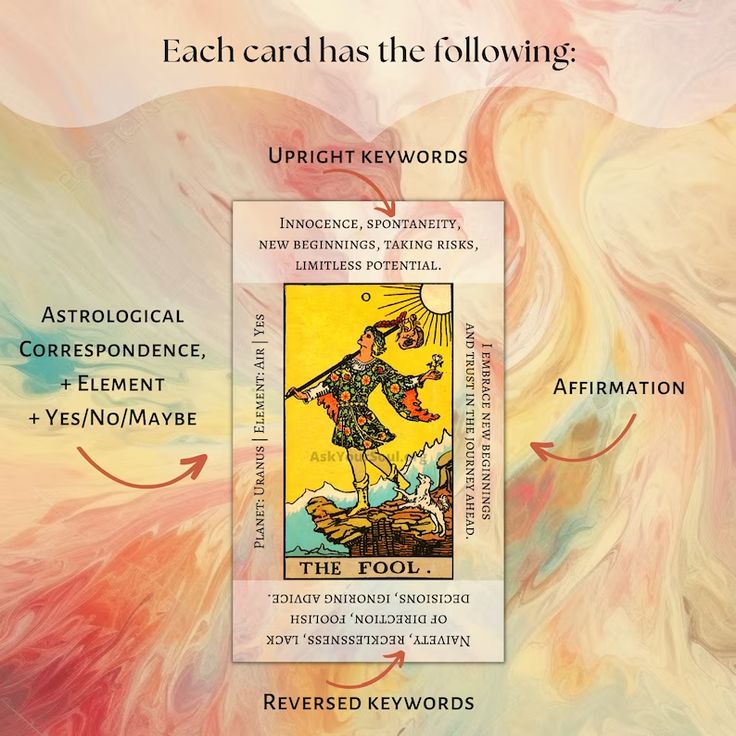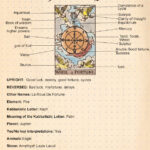The world of tarot is steeped in mystique, layered with symbolism and arcane meanings. Among the myriad of tarot decks available, the Rider-Waite Tarot remains a quintessential beacon for enthusiasts. But how does one reconcile the readings from these cards with the tenets of Christianity? This inquiry leads to a fascinating junction between divination and faith, beckoning an exploration of the Rider-Waite Tarot card meanings from a Christian perspective.
Imagine a deck of cards, each one an embodiment of archetypal energies and profound insights. As you shuffle and draw, a question lingers: Can the path of tarot coexist harmoniously with Christian doctrine? This contemplation poses a playful challenge. Tarot has historically been viewed with skepticism by many in the Christian community. Yet, the complexity of human experience and divine interaction provides fertile ground for dialogue.
Let’s delve into the structure of the Rider-Waite Tarot and its meanings, translating these into a Christian lens. Each card functions as a narrative, a story waiting to unfold. How can these narratives resonate with faith, hope, and moral guidance prevalent in Christianity?
To embark on this exploration, one must first grasp the foundational elements of tarot. The Rider-Waite Tarot consists of 78 cards divided into the Major and Minor Arcana. The Major Arcana cards—22 in total—represent significant life lessons and existential themes. Meanwhile, the Minor Arcana consists of 56 cards, subdivided into four suits that mirror everyday experiences. Together, they formulate a comprehensive framework for interpreting life’s complexities.
Looking at the Major Arcana, there are notable cards that echo Christian teachings. For instance, The Fool symbolizes new beginnings and faith in the journey ahead. In a biblical context, it could be likened to the faith exemplified in Proverbs 3:5-6, which instructs believers to trust in the Lord with all their hearts. Such parallels invite Christians to view tarot not as an occult practice but as an exploration of spiritual growth.
Consider The Empress card, which embodies fertility, beauty, and nurturing. This aligns strikingly with the Christian ideal of compassion and stewardship. The Biblical narrative often depicts God’s love and nurturing presence, making The Empress a potential representation of divine femininity and maternal instincts. Each interpretation enriches the understanding of spiritual and emotional dimensions within life’s trials.
In contrast, cards like The Tower represent upheaval and chaos, with the potential for transformation. While such turmoil might seem contrary to Christian beliefs, it bears resemblance to scripts regarding trials, such as James 1:2-4, which speaks to finding joy in challenges for the purpose of growth and perseverance. The challenge of interpreting The Tower lies in acknowledging that chaos can lead to clarity and renewal.
The Minor Arcana, while often overlooked, provides additional riches for consideration. The suit of Cups, associated with emotions and relationships, resonates deeply within Christian tenets of love and community. A card like the Two of Cups embodies partnership and harmony and invites reflection on the covenantal relationships celebrated in many Biblical narratives. How can Christians utilize these insights to enhance their relational dynamics?
Each card presents a dual nature, as it encapsulates both the light and shadow aspects of human experience. The Five of Swords, for instance, depicts conflict and discord. It challenges the believer to ponder the moral implications of strife. How does one reconcile personal ambition with the call to love one’s neighbor as themselves? This question urges a reflective stance, fostering an understanding of the delicate balance between ambition and morality.
What about the use of tarot within a Christian framework? While some may argue against employing tarot as a divination tool, there are those who perceive it as a means for contemplation and reflection rather than foretelling the future. Tarot, when approached with intention and discernment, can serve as a guide for introspection, much like prayer or meditation. It fosters a dialogue with oneself and, by extension, with God.
To ensure this practice remains rooted in faith, seekers could adopt a framework for interpretation that aligns with Biblical principles. For example, before engaging with the cards, one could pray for guidance and clarity. This intention sets a tone for the reading, transforming the act into a spiritual exercise rather than mere fortune-telling.
It also underscores the importance of humility and openness to receive wisdom—values treasure within Christian doctrine. In this way, tarot might be perceived as a companion on the spiritual journey, encouraging individuals to ask difficult questions and seek divine answers.
Ultimately, navigating the waters of tarot from a Christian perspective encourages a nuanced dialogue. It dares practitioners to reconsider preconceived notions, activating a broader understanding of faith and spiritual exchange. As Christians, can these cards be tools for deeper understanding of oneself and a means to engage with God’s narrative? The bridge between the Rider-Waite Tarot and Christian beliefs is as complex as it is enlightening.
Engaging with the Rider-Waite Tarot through a Christian lens poses both a challenge and an opportunity. Can we embrace the poetic language of these cards while still honoring our spiritual commitments? As we explore the meaning behind the symbols, may we discover that the quest for understanding our lives is indeed a sacred journey—one that invites contemplation, prayer, and perhaps, a bit of playful inquiry along the way.










Leave a Comment